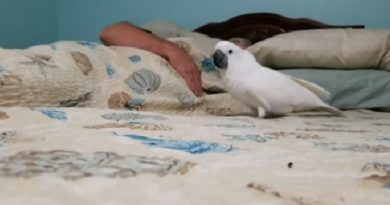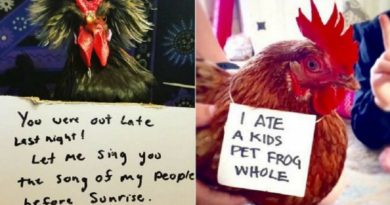Is It A Clown Or A Parrot !?
The puffin, Arctic clown monk names for a bird that most of the flight carried out on ice floes that float Arctic Ocean. Striking looks, which bears an uncanny resemblance to some other species of birds, sea parrot reasonably carries several names that his people gave.
Sea parrots are birds that feed by diving in the water. Pare in large colonies on rocky coasts and cliffs. All subspecies of sea parrots are predominantly black or black and white feathers, plump and large beaks. After mating reject the colorful outer parts of their beaks after which they remain far smaller and “boring” beak.
Their short wings are specially adapted for swimming technique that involves “fly” pot with water. When flying in the air by their wings very quickly run up to 400 times a minute.
In early March, these birds are moving on the rocky coast of Greenland, northern Canada, Russia, Scandinavia, Ireland and France, where he retained until the end of the year. Sea parrots belonging to the genus Fratercula, the name is Latin for “little brother” and is associated with the appearance of birds with black and white feathers reminiscent of monastic robes. The largest number of Atlantic ocean parrot (about 10 million) live in Iceland.

Featured are three subspecies of sea parrot: Atlantic, Great Crested and Horned puffin. The Atlantic is the only species that lives in the Pacific Ocean, but on the shores of Northern Europe, France, Britain, the Faroe Islands, Iceland, Greenland, Norway and Canada. When winter comes Atlantic ocean parrot migrates up to Morocco and New York. Crested guinea parrot living on the shores of Siberia, Alaska and British Columbia, while the winter is carried out in California. Horned year also carried out in California, but also on Honshu, as it inhabits the south-eastern parts of Alaska, Kamchatka and the Sea of Okhotsk.
The appearance and other characteristics
Sea parrots are stocky birds with short wings and tail, black back and white or greyish front part of the body. The head has a black “cap”, while the face is mostly white, and orange-red legs. Stem their colorful during the breeding season, while after mating turns into a small monochrome.
Very noisy during the mating period, these birds are actually silent at sea. On summer relatively high above the water, usually 10 meters. Pare in colonies on coasts and islands, and many current and former city therefore bear the name puffin Island.
In Atlantic puffins male is the one who builds the nest, while the horned participate in the construction of both sexes. Lair horned sea parrots are usually a meter deep and end with the chamber, while the Crested marine parrot can exist tunnel lair seems deep and 3 meters. Marine Atlantic and crested parrots nest mainly on the surface that is relatively soft, while horned inhabit the cracks of rocks on the cliffs.
Sea parrots are very faithful in love and the pair for life, although the winter spent away. They always come back to the same place when the year. Female in June or July lay only one egg, of which both parents care. After six weeks, a small sea parrot comes into the world, and from that moment the parents take turns love of the sea food for their offspring.

Since the dive, the birds love mainly fish and are able to be under water for about 60 seconds. Catch agree to abide by the beak and tongue so as not to drop it. In addition to fish, a favorite food are mollusks and small crustaceans. A month and a half after birth, a young marine clown is ready for independent life and move to the sea, where they will spend the first winter.
The survival of puffin – sea parrot
People love these puffin birds for eggs, feathers and meat. The population of porbeagle parrot has drastically declined due to destruction of their habitat and exploitation during the 19th and early 20th century. In Iceland, these birds are part of the national cuisine, and their meat can be found on the menus of many hotels.
Sea parrots love to a special technique called “heavenly Fishing”, which includes the capture of birds flying low with a large network. In addition to humans, a threat to their survival are natural enemies such as dogs, cats, rats and foxes. At sea, their risk is of gulls, but they still represent the greatest danger to global warming by destroying their habitats.


